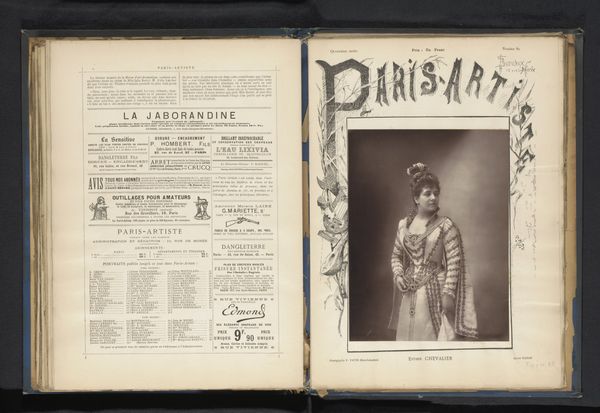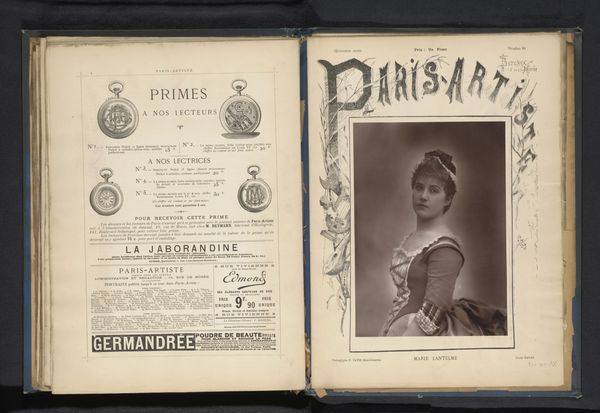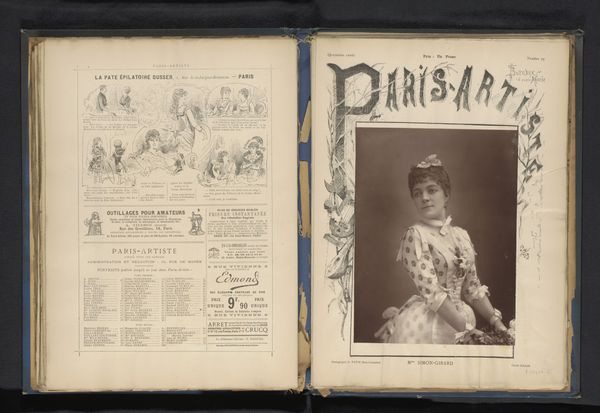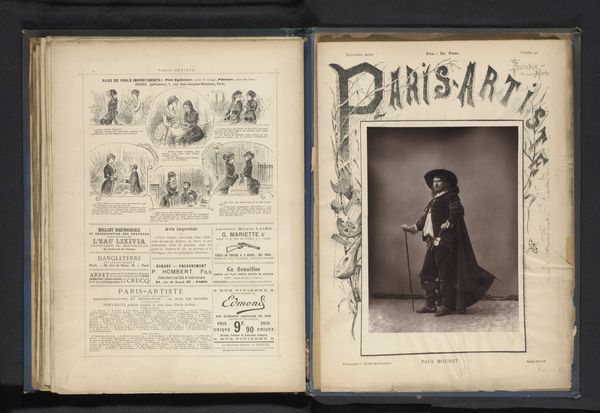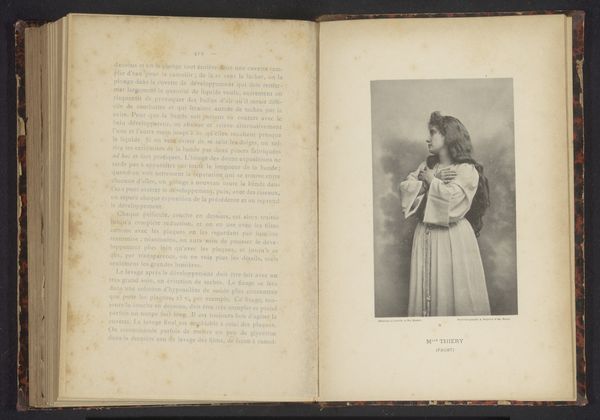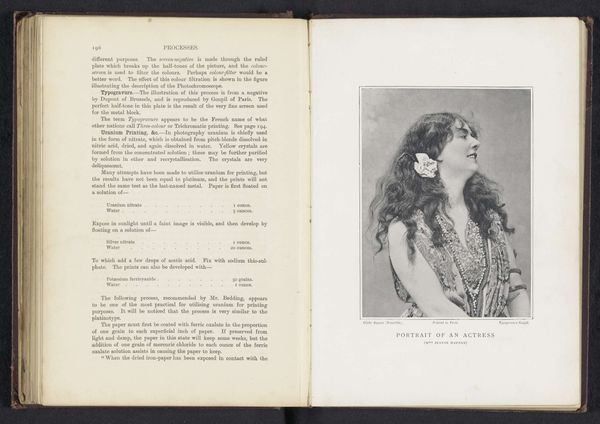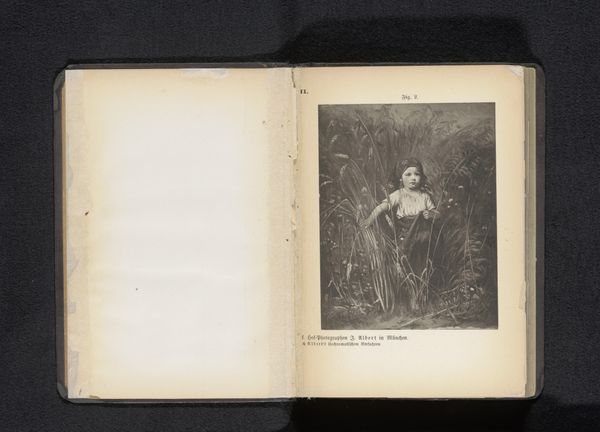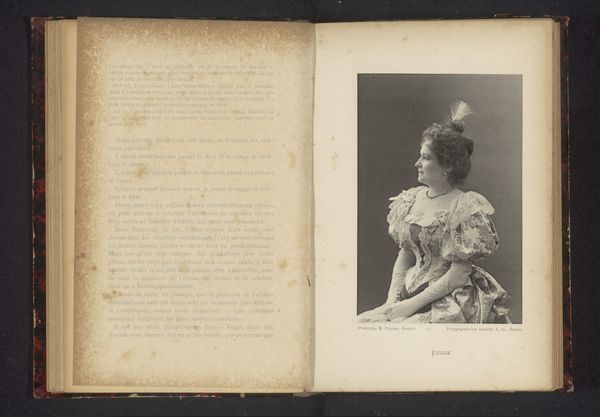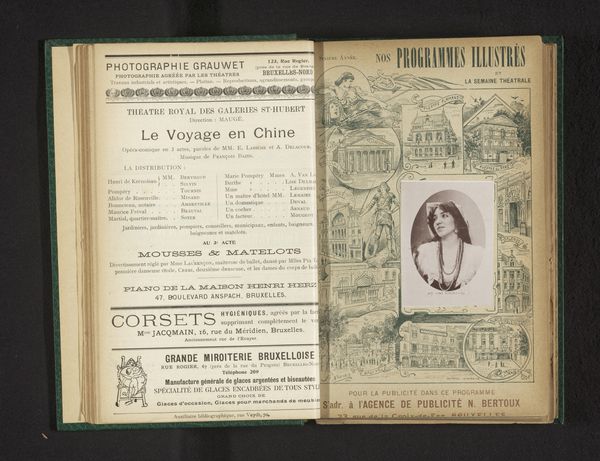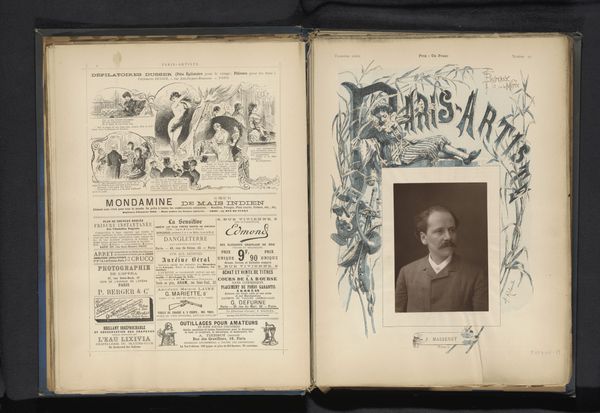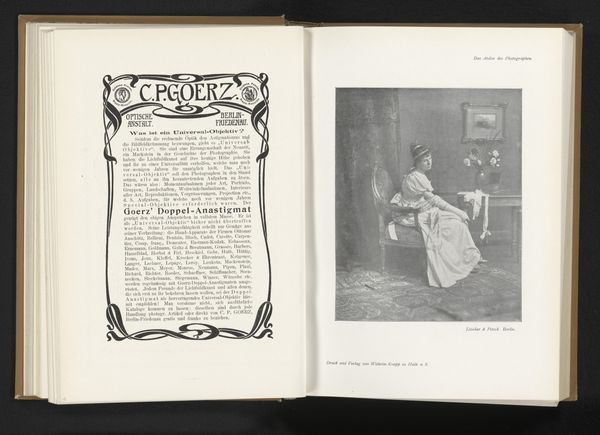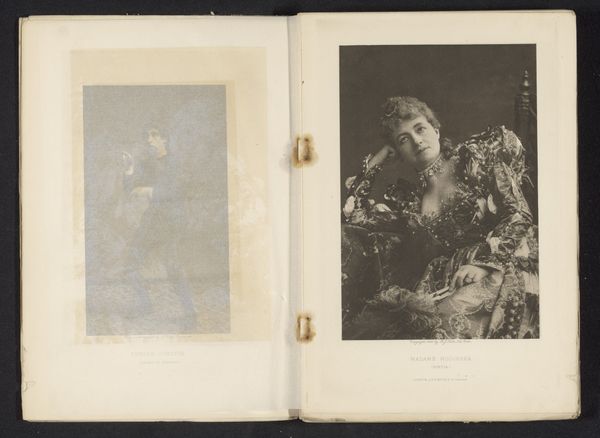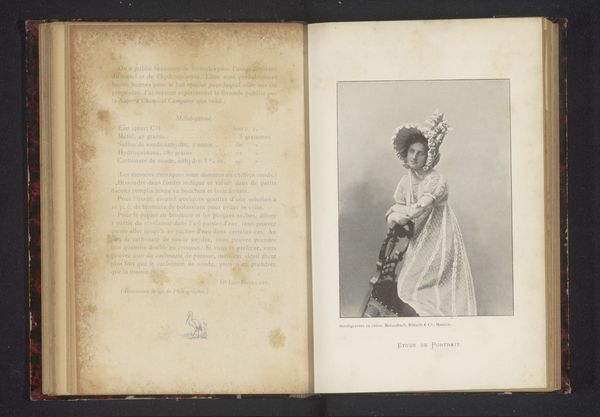
print, photography, gelatin-silver-print
#
portrait
# print
#
photography
#
gelatin-silver-print
Dimensions: height 249 mm, width 171 mm
Copyright: Rijks Museum: Open Domain
Curator: Nadar, around 1880 to 1886, captured Eugénie Caroline Weber’s likeness through photography. Specifically, this piece in the Rijksmuseum is a gelatin-silver print, mounted in an illustrated magazine. Editor: Wow, she looks so… haunted. Or maybe just really, really bored. There's a powerful intensity about her eyes. The black and white amplifies that somewhat weary look. Curator: Right, and considering Nadar's own political leanings, perhaps "haunted" isn’t far off. Nadar's studio became a meeting place for progressive thinkers, a kind of salon. So this portrait wouldn't simply be about aesthetic representation, but a social commentary. Weber might have represented certain ideas aligned with these progressive circles. Editor: Maybe it’s her posture. It's both defiant and defeated at the same time. I bet her clothes are rough. Like a worker, but presented almost like a classical subject with her unbound hair. Curator: The layering of meanings is what makes it intriguing. Photography itself was then a rapidly evolving technology, challenging traditional portraiture's role. Her expression could be a deliberate play on theatricality, something both intimate and performative. Editor: It also looks like a character study. Like, not just her face, but who she IS. You want to write a whole backstory for her. Maybe that was the intention. Curator: Yes, consider the larger "Paris-Artiste" context too – within those pages were probably fashion spreads, articles praising bourgeois life, all kinds of content reflecting different aspects of French society. This stark portrait disrupts any easy reading. Is she there to remind readers of the invisible labor propping up their society? Editor: Hmm, interesting. What was the impact of photography as art, anyway? People would still go get painted portraits after that, wouldn't they? I am trying to imagine a modern artist using photographic magazines from today like that. Curator: Definitely! Wealthy families sought painted portraits to signal their elite status well into the 20th century, for sure. But works like this broadened art’s social function. This magazine placement suggests a strategy of mass communication: injecting subversive ideas right into mainstream visual culture. Editor: Yeah, there's this tension between documenting her *being* in that moment while also letting her symbolize something larger, perhaps even revolutionary for her time. Okay, I can appreciate that context now. Curator: Absolutely. I am satisfied we were able to connect Nadar’s photograph with a much larger history that goes well beyond mere artistic beauty and technical prowess. Editor: Indeed! This woman's gaze definitely stirred more than just a passing thought. She has earned my artistic musing today.
Comments
No comments
Be the first to comment and join the conversation on the ultimate creative platform.
